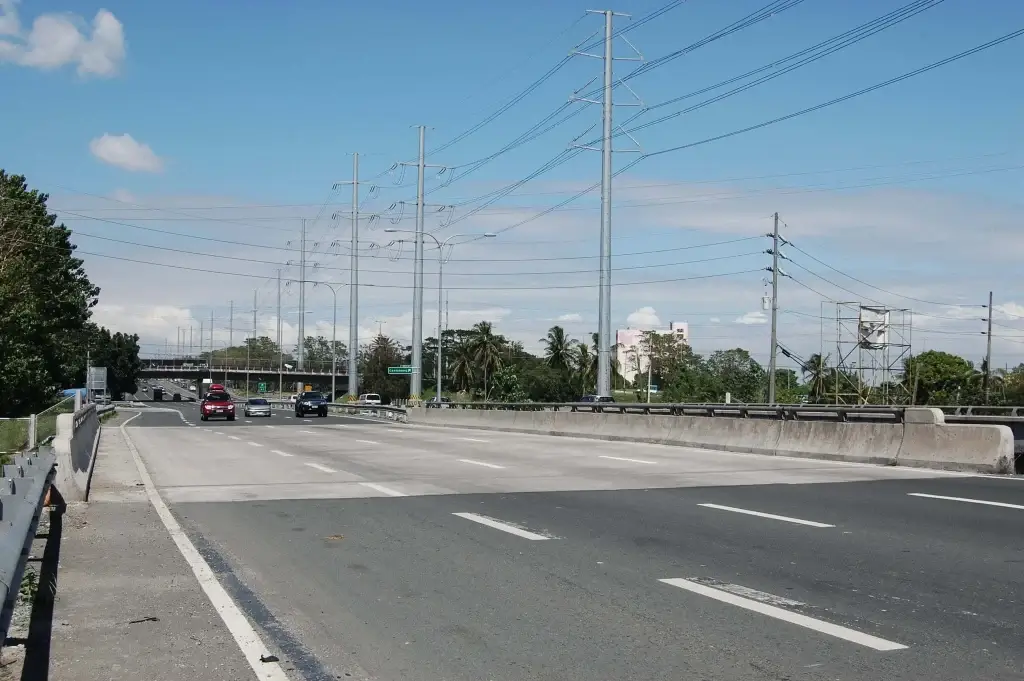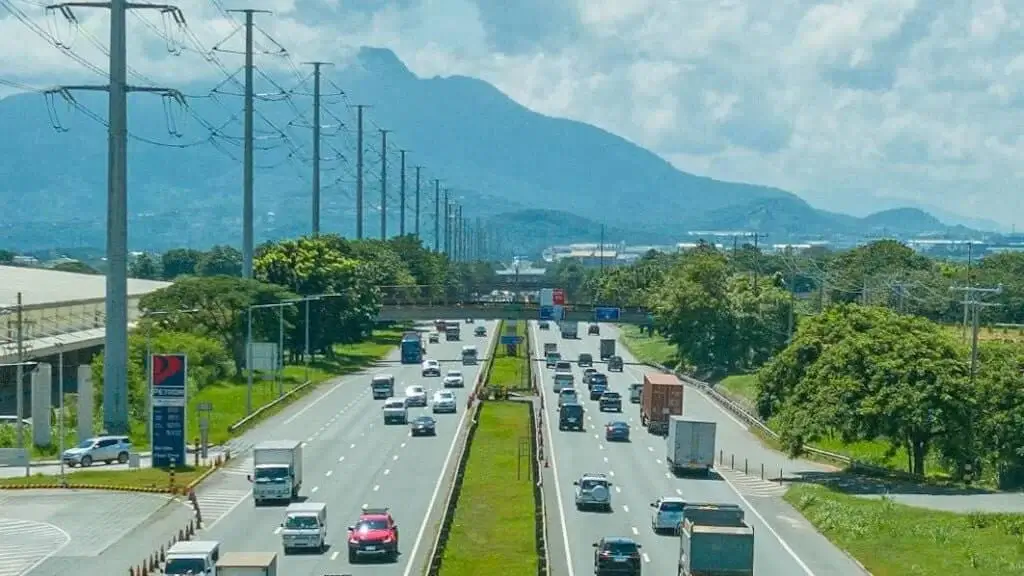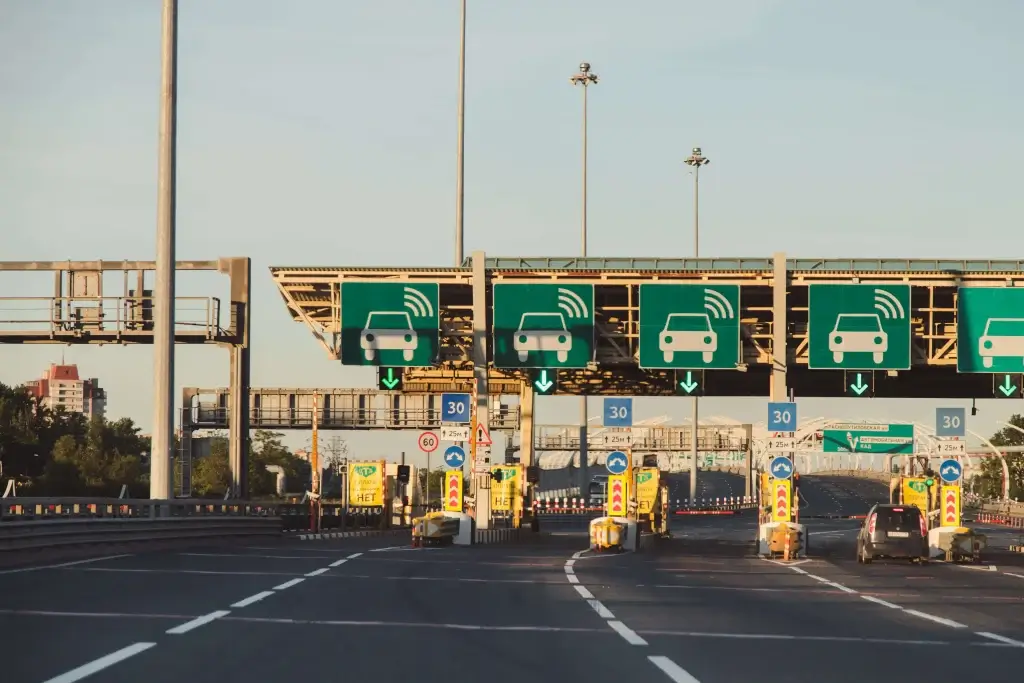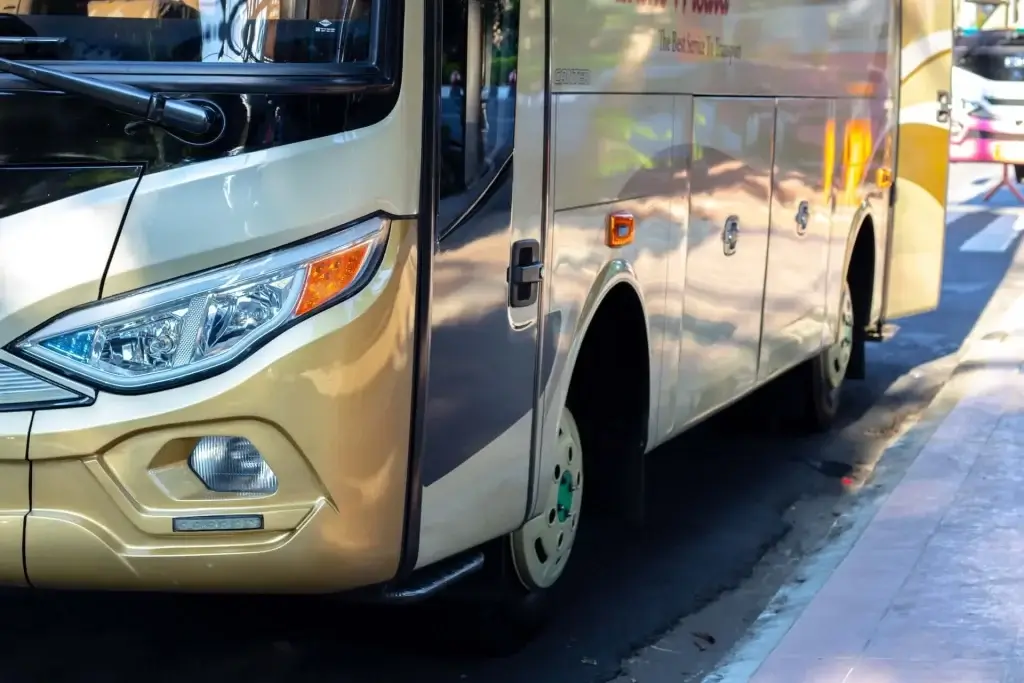Updated as of May 27, 2023
When traveling great distances between the different cities and regions to get to your house and lot for sale in Luzon, one of the three major islands in the Philippines, there is a necessary use of the Philippines expressways, other than a skyway system to save time. The Philippine expressway network is a “controlled-access highway network” that enables safe, smooth, and fast mobility to pass across strategic regions and cities in Luzon to foster socio-economic activities and growth for the country while reducing heavy traffic, especially when you travel on your car from urbanized cities like Manila to as far as Quezon.
Facilitated by the Department of Public Works and Highways, the Philippines expressway network or High Standard Highway Network comprise multi-lane roads that make travel time to your house and lot for sale efficient that utilize toll gates mandated by the government. One of the expressway networks in Luzon is the Southern Luzon Expressway (SLEX). This blog aims to give an overview of the SLEX and its significance not just to Manila, but to Luzon as well in modern times.
What is the South Luzon Expressway (SLEX)?
Built during the 1960s, the South Luzon Expressway or SLEX was initially constructed to create an extension from Magallanes (Makati) in Manila to Alabang (Muntinlupa City); however, construction was done in the 1970s to make the SLEX reach southward to Calamba (Laguna). At present, the SLEX is comprised of three expressways that stretch from Makati, passing through Muntinlupa City, Laguna, to Sto. Tomas, Batangas. Essentially, the SLEX connects Metro Manila to the CALABARZON (Cavite, Laguna, Batangas, Rizal, and Quezon) region.
Moreover, the South Luzon Expressway, or SLEX is operated under the San Miguel Corporation (SMC) and has been developed to have an extension at a length of 46.9 kilometers located at its northern terminus (Magallanes Interchange, Makati), to its southern terminus (Sto. Tomas, Batangas). The SLEX is also signed as R-3 of the Manila arterial road network and as E2 of the High Standard Highway Network, wherein the southern part of the SLEX connects to the Southern Tagalog Arterial Road (STAR Tollway).
What is SLEX in the Philippines?
South Luzon Expressway is one of the major expressways in the Philippines that ease road travel by connecting Metro Manila to the provinces in the South. It has 4 toll road projects, 3 of which are fully functional and are open to the public while the other one is a future expansion project for SLEX.

Photo from foundation-specialists.com
Who Built the South Luzon Expressway?
You might wonder, who built South Luzon Expressway?
SLEX is actually done by a joint venture called South Luzon Tollway Corporation (SLTC) of MTD Capital and the Philippines National Construction Corporation (PNCC). The project was started in 1967 and was completed and opened to the public on December 16, 1969. SLEX is considered the PNCC’s second major roadway project. It initially provided 15 kilometers stretch from Makati to Alabang.
Are Skyway and SLEX the Same?
No, they are entirely different road projects. The South Luzon Expressway (SLEX) is constructed to link Metro Manila to different South Luzon provinces and create a much easier route for everyone.
Whereas, Skyway or Metro Manila Skyway is made to connect NLEX to SLEX. The Skyway goes from North Balintawak to Susana Heights in the South. The Skyway system is approximately 42.79 kilometers in length.
What Is the Longest Expressway in Luzon?
And you may be wondering about what is the longest expressway in Luzon. While SLEX is approximately 46.9 kilometers in length it is not the longest expressway in Luzon. The longest expressway in Luzon is North Luzon Expressway or greatly known as NLEX. With its length of 105 kilometers, it is also considered the longest Expressway in the Philippines.
What Is the Purpose of the SLEX?
As previously stated, the construction of the South Luzon Expressway, or SLEX connects Metro Manila to the CALABARZON region in Luzon and stimulates national socio-economic development in strategic locations. Furthermore, one of the expressway networks leading to the south is the Muntinlupa-Cavite Expressway (MCX) and the Cavite-Laguna Expressway or CALAX; the SLEX is another network that motorists can use to travel to the south of Luzon to get to their work or house and lot for sale, especially since the SLEX connects to the STAR Tollway in the south of Luzon.
Furthermore, the SLEX is included “as a major utility corridor, carrying various high voltage overhead power lines and an oil pipeline.” Lines that utilize the SLEX include the Calamba-Bay and Biñan-Calamba power lines, the Sucat-Paco-Araneta-Balintawak transmission line, and the Batangas-Pandacan oil pipeline.
The SLEX Operators
With the aim of rehabilitating the South Luzon Expressway or SLEX, the San Miguel Corporation (SMC) SLEX INC, which was formerly called the South Luzon Tollway Corporation, was established in 2000. This rehabilitation was incorporated by SMC SLEX INC as a way to maximize the SLEX’s service of connecting two expressway networks: the Skyway System in the north of Luzon and the STAR Tollway in the south of Luzon.
Given this, SMC SLEX INC is the concessionaire of the SLEX, which means that the SLEX is property granted to SMC by the government in exchange for the construction, repairing, development, and upgrading of the services of the SLEX for the use of Filipinos. At present, four project toll roads under the SMC comprise the SLEX, including the Alabang Viaduct, “an extension of the SLEX to Sto. Tomas, Batangas,” “expansion from Filinvest exit to Calamba, Laguna,” and the extension of Sto. Tomas, Batangas, to Lucena City, Quezon.

Photo from carguide.ph
Short History of the SLEX
Planning and Development
The South Luzon Expressway or SLEX began its construction in the 1960s was only 15 kilometers long, connecting the EDSA (Highway 54) in Magallanes, Makati to the Alabang Exit in Muntinlupa. In the 1970s, the SLEX gave an extension of 29 kilometers, enabling the SLEX to reach Calamba, Laguna. Rehabilitation of the SLEX was then conducted in 1995.
Expansion
Years later, starting in 2006, several projects of rehabilitation were done on the SLEX in an attempt to solve the problem with regard to traffic congestion and reduce travel time, fuel usage, maintenance costs, and road safety. This includes the expansion of the Santa Rosa-Calamba section into six lanes, the expansion of the Alabang-Santa Rosa section into eight lanes, and the Alabang Viaduct. The Alabang viaduct was turned from three lanes to four lanes as well. The Filinvest exit was also widened to eight lanes. The rehabilitation project was completed in June 2010, which now connects Manila to other neighboring provinces such as Cavite and Laguna.
What Cities and Provinces Does the SLEX Cater To?
With its overall road length, it caters to cities and provinces which begin from Paco District, Manila, Makati, Pasay, Taguig, Parañaque, San Pedro, Muntinlupa, Biñan, Carmona, Sta. Rosa, Cabuyao, Calamba, until its last stretch to Sto. Tomas Batangas. SLEX basically links Metro Manila to cities and provinces under Cavite, Laguna, Batangas, Rizal, and Quezon (CALABARZON).
What Are the SLEX Exits?
There are several exits in the South Luzon Expressway that you can access depending on which destination are en route to. The expressway exits are as follows:
Merville
Direct you to the West Service Road and to a temporary C-5 extension in Pasay City.
Bicutan
With a diamond junction, Bicutan Exit leads you to residential areas of Parañaque City and SM Bicutan City in the West and in Pasay City, Taguig City, Taytay, and some parts of Rizal province in the East.
Sucat
This SLEX exit goes to the Ninoy Aquino International Airport, Memorial Parks, and the Parañaque City Proper westbound, and Muntinlupa City in Barangay Sucat eastbound.
Alabang
Alabang Exit goes from National Highway to Pagsanjan, Laguna, and Real St. Alabang- Zapote Road to Las Piñas City and Cavite City which also leads to Filinvest Exit.
Filinvest
This exit directly takes you to Filinvest District and also gives access to the Alabang exit that leads to Alabang-Zapote Road.
MCX
MCX or Muntinlupa-Cavite Expressway entrance is directly in SLEX, specifically nearby Susana Heights, and exits on Daang-Hari Road.
Susana Heights
Susana Heights SLEX exit takes you to Susana Heights, other areas in Laguna, and Tunasan Proper if you take it southbound. Northbound takes you to some areas in Muntinlupa such as New Bilibid Prisons, and the Muntinlupa City Hall.
San Pedro
This exit provides access to San Pedro when taken southbound, San Pedro’s private subdivision if westbound, and San Pedro’s town proper eastbound.
Southwoods
Head into Southwoods Manor westbound and some areas in Laguna eastbound. Can also be a shortcut going to Carmona, Cavite.
Carmona
Westbound of the Carmona Exit leads to some areas in Cavite like the town proper of Cavite, GMA, and Dasmariñas. If taken eastbound, it leads to some parts of Laguna.
Mamplasan
It provides access to the Sta. Rosa exit in Laguna.
Sta. Rosa
Sta. Rosa SLEX exit heads to Santa Rosa City Proper and Enchanted Kingdom Amusement Park eastbound and other areas of Batangas and Cavite like Nuvali, Silang, and Tagaytay City westbound.
ABI/Greenfield
Eastbound leads to other areas in Cabuyao and westbound to Laguna and Cavite province.
Cabuyao
This exit has access to some areas inside and near Cabuyao like Calamba, Sta. Rosa, and Canlubang.
Silangan
This is the first exit in Calamba that serves as a shortcut route going to Canlubang.
Calamba
Calamba Exit leads you to Calamba City proper, Rizal province, and Los Baños southbound.
Sto.Tomas
Going with Sto. Tomas exit will head to Maharlika Highway. Going left will bring you to Santo Tomas town proper while going right leads to the Sto. Tomas Batangas and Laguna. This is also known as the Toll Road 4.

Toll Fees System of the SLEX
The South Luzon Expressway or SLEX’s toll system is integrated with the MCX and South Metro Manila Skyway Project, incorporating a “closed and barrier toll system.” A toll system, like the one utilized by the aforementioned expressway networks, is incorporated as a way to extract toll fees from drivers on the road who use the expressway networks and enter the toll gates while traveling from their house and lot for sale. Toll fees are payments collected for the purpose of the maintenance and rehabilitation of the respective expressway network.
RFID System for the SLEX
Cash is accepted as toll fees in the toll system of SLEX, although a Radio Frequency Identification System (RFID) is now implemented in the SLEX. Particularly, the SMC, which is the one operating the SLEX at present, offers one of two different RFIDs, called an Autosweep RFID, to pay toll fees. Hence, you can request to use an Autosweep RFID to pay toll fees in the STAR Rollway, Tarlac-Pangasinan-La Union Expressway (TPLEX), and the NAIAX. The installation sites for the Autosweep RFID for paying toll fees in the SLEX include Eton Toll Plaza (northbound), Southwoods Toll Plaza (northbound), TPLEX Tarlac Main Office (northbound), and After Calamba Entry Toll Plaza.
Vehicle Class Systems for the SLEX
The toll system in the SLEX follows a system for classifying vehicles on the road, wherein vehicles that fall within one of the three specific vehicle classes pay different toll rates. Toll fees for the different vehicle classes also depend on which toll gates you will enter on the SLEX road. You may check the official Toll Regulatory Board official website for the toll fee pricing or cost.
The different vehicle classes for toll fees to take note of are as follows:
Class 1
Class 1 vehicles are typically personal vehicles on the road, like your car in your house and lot for sale, that are not as big as trucks. Examples include cars, motorcycles, jeepneys, and vans. Specifically, these vehicles have a maximum of 2 axles and a height that reaches up to 7.5 feet only. When it comes to high-roof vans, a specific height requirement must be satisfied for a vehicle to be categorized under Class 1. For example, a Hi-Ace van satisfies the height requirement of a Class 1 vehicle, but a Hyundai H350 does not.
Check Out Our House and Lot Properties in the South!
Class 2
Class 2 vehicles typically involve vehicles bigger than a car on the road like light trucks and buses. They specifically have 2 axles and a height of over 7.5 feet. However, if a Class 1 vehicle were to have a trailer attached to it, then it would be classified under Class 2 because the total number of axles of the vehicle would increase.
Class 3
Class 3 vehicles include the biggest vehicles on the road. These vehicles usually have 3 or more axles with a height of over 7.5 feet. Large trucks with or without a trailer comprise this class of vehicles. Although big vehicles such as buses are categorized as Class 2 vehicles, what separates Class 3 vehicles is that they have 3 or more axles instead of just 2 axles on the road.

How Much Is the SLEX Toll on Each Class?
The south luzon expressway (SLEX) toll fees vary depending on which class your vehicle belongs to. For class 1, you are expected to pay toll fees ranging from PHP 4 to PHP 260 depending on where are you coming from and where are you exiting. For class 2 vehicles, the toll fee ranges from PHP 10 to PHP 521. And the toll for the vehicles under class 3 is from PHP 14 to PHP 781.
How much is the toll gate at Skyway?
For class 1, the toll fee ranges from PHP 105 to PHP 264. Class 2 is expected to pay PHP 210 to PHP 528. On the other hand, PHP 315 to PHP 792 is the expected toll fee for class 3.
Some may also ask, the toll fee from Skyway Balintawak to SLEX ranges from PHP 129 to PHP 792.
What is the toll fee for CALAX Autosweep?
For Calax on the other hand, the toll fee for class 1 ranges from PHP 14 to PHP 64, class 2 from PHP 29 to PHP 128, and class 3 from PHP 43 to PHP 192.
Read More: The Benefits of Living Close to the South Luzon Expressway


